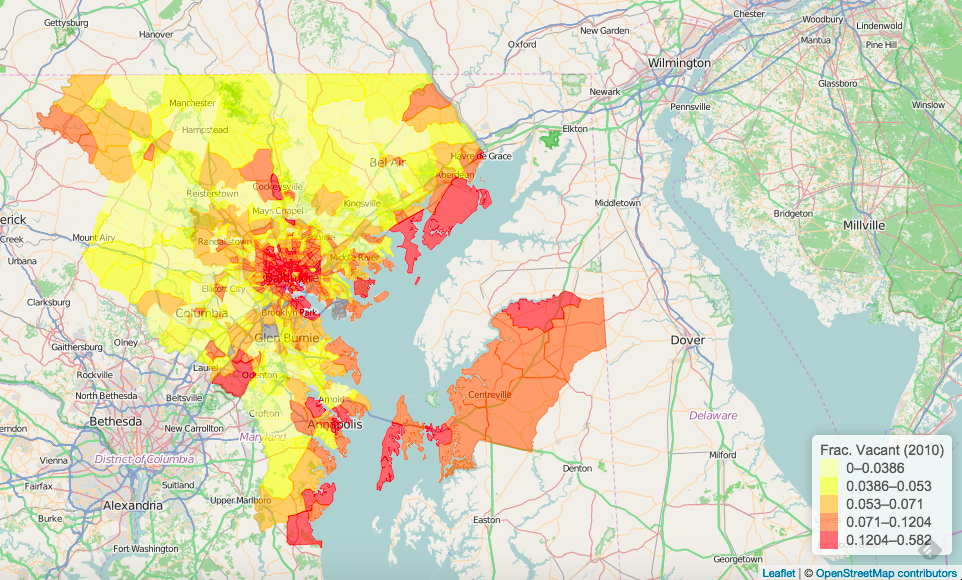We’ve seen maps that use data to address Baltimore’s notorious issue with vacant homes. But at Johns Hopkins, experts are using a strategy originally used for spotting far-off galaxies.
In an article Monday, CityLab highlighted the city’s partnership with Hopkins astrophysicist Tamas Budavari. He’s using big data in a way that is often used by astronomers.
Working with doctoral student Phil Garboden, Budavari is developing a database of the city’s housing stock, and a tool to predict the likelihood of a house becoming abandoned.
“Just like how galaxies cluster in the universe, houses also cluster in the city,” Budavari told CityLab. “So if you have a vacant house in a given place, there’s a higher probability of finding other ones next to it.”
They are looking to expand their work to other cities, as well.
Read the full story
The partnership was through Hopkins’ 21st Century Cities program, which is accepting new grant applications through March 24.
Join the conversation!
Find news, events, jobs and people who share your interests on Technical.ly's open community Slack

This Black gaming advocate has a mission to transform education through esports

Is AI really something new — or just the next big technology platform?

This Week in Jobs: Get out there with 22 new job opportunities available to you!


